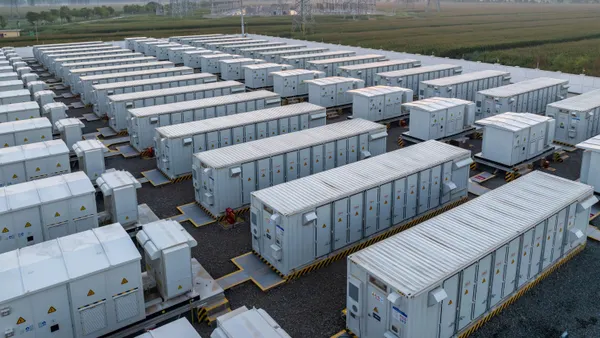From the dungeons of rap, FERC Commissioner Mark Christie recently offered an illuminating interview that frames the challenges the RTO/ISO administrative market construct poses to a reliable, affordable and decarbonized electric future. Christie said what RTO proponents have been struggling to defend for years: the “mind” of the RTO/ISO market yields insalutary outcomes that have to be changed after-the-fact. This means you get the worst of both worlds — a “market” that doesn’t benefit customers and regulatory interventions that try to put on a post hoc band-aid to mitigate the harm.
Commissioner Christie recently published a paper that covered a wide variety of issues in the Energy Law Journal, focusing primarily on the single clearing price issue we have raised in these pages before. In a HEATMAP interview with “the most interesting man” on FERC, to quote the interviewer, Commissioner Christie offered this observation:
You have more accountability in the non-RTOs because the state regulators can tell the utility, “you need more resources, go build it or buy it,” or “you already have resources, you’re not going to shut them down, we’re not going to let you.” You don’t have that in an RTO. In an RTO, it’s all done through the market. The market decides, to the extent it has a mind. You know, it’s all the result of market operations. It’s not anybody saying whether it’s a good idea or not for a certain unit to shut down.
Thinking about the legal term mens rea, which seeks to ascertain the state of mind of the accused when committing a crime, combined with Commissioner Christie’s remark raises a valid question: What is the state of mind of RTO/ISO constructs and can they drive an affordable, reliable and decarbonized future?
In a normal market, the market has no “mind,” but is an emergent phenomenon arising through the decisions of scores of producers and consumers. This is a feature, not a bug, with the benevolent gaze of Friedrich Hayek looking down serenely at order arising not from the top down, but the bottom up.
The RTO/ISO construct, however, is — like its cousin the vertically-integrated model — a top-down phenomenon. Planning is at the core of it. A mind must design it, direct it, forecast it, set its demand curves, correct its price distortions, and abrogate its price systems when necessary. It has a mind because it is, by necessity, the playing out of a planning model.
What does this mind of the market yield then? What is the mens rea of the RTO/ISO planner?
In their founding, the RTO/ISO mind meant to instill marginal cost pricing discipline on generation markets where the embedded costs of the system and the marginal cost of generation had diverged widely, particularly in certain states like California, Texas and Pennsylvania. This initial planning mind to the market took transmission as a given, not as a complement and part of an integrated system. The blackboard instance of the RTO/ISO mind was this: “imagine a pervasive non-congested transmission system onto which competitive generators can interconnect and compete on price based on a (fairly uniform) generation mix and (fairly predictable) set of demand conditions….competitors start your (gas or coal) engines!”
That mind has had to be changed in the intervening 25 years.
For one, the uniformly dispatchable fossil backbone of the generation fleet has rapidly transformed to one having a large quantity of near-zero marginal cost weather-dependent resources. Once federal tax policies combine with state subsidy regimes, these resources can be profitable even at negative auction prices. In turn, these auction outcomes stress the economics of the generation resources with higher operating costs. These resources then have three choices: go bankrupt, receive a cost-of-service based reliability must-run contract, or seek state-based compensation (zero-emission credits). The mind of the RTO/ISO planner, meanwhile, is rightfully preoccupied with reliability and a price system lacking basic integrity, so it comes up with its own set of interventions to correct other interventions.
For two, the transmission system cannot be assumed to be pervasive and non-congested, or to simply exist as a resource whose costs are socialized across the entire customer base. Transmission is both a complement to and a substitute for generation. This means it must be planned on an integrated basis with the whole system of generation, transmission and, yes, even consumption for the feedback loops to be optimized for customer cost, reliability and resource mix. Is more transmission needed across the nation? Most certainly yes. And it needs to be planned and incentivized in accordance with state policies and beneficial generation resource zones.
For three, environmental public policy has come to the fore since RTOs/ISOs were thought up. Carbon policy drives planning through explicit requirements, including tax policy and environmental regulation. Resources in the generation mix, therefore, are chosen not only because of their reliability and cost superiority, but because of the carbon benefits they bring. The price system gives way to this, which in turns mean RTOs/ISOs must intervene to correct the price system that is no longer working toward least marginal cost production, much less maintenance of system reliability.
For four, the political economy introduced by these layers of political and regulatory directives will overwhelm the straightforward “mind” of RTOs/ISOs planning toward the lowest marginal cost resources being dispatched to meet (derived) customer demand. The single-clearing price auction rule is the latest entry in the anti-customer manual to be found wanting through a political economy lens. When the average cost of resources increases above the marginal cost of a large cohort of available resources, consumers pay more than they would otherwise in a regulated situation.
In a regulated circumstance, the customer gets the benefit of the blended costs of zero-marginal cost weather-dependent resources with the higher operating costs of more flexible, on-demand fossil resources. By contrast, in the RTO/ISO, that margin between the zero-marginal cost weather-dependent resource and the fossil unit setting the clearing price goes to the owners of the resource. Now, one might say that is how it should be. We need strong incentives to build zero-marginal costs, carbon-free resources. But ask customers, ratepayer advocates regulators and politicians whether the customer or the generator should get that margin.
And this is precisely the capacity and reliability conundrum faced by the RTOs. The attractive margins in the RTO/ISO lie in building more highly subsidized, zero-marginal cost resources. By contrast, there is no incentive to build more dispatchable resources because, by definition, your profits from dispatching the marginal unit are much lower than for resources that can grab the entire margin. Of course, in turn, this exacerbates the capacity crisis as non-dispatchable resources crowd out dispatchable ones. Superadd to all this the price system that misses the tax advantages conferred by the PTC and ITC, meaning that resources are profitable even at negative clearing prices.
To exit these four doom loops, the architects of the RTOs/ISOs must do the one thing they abjured in the first place. The planner comes in the back-, side- and front-door of the RTO/ISO to rejigger the outcomes of the price system (MOPR, subjective exercises in defining the load carrying capacity of different generating technologies, reforming auction outcomes after-the-fact) to set the “right” price for capacity; to set a price by diktat at the price ceiling to keep capacity up and running during extreme weather (ERCOT in Winter Storm Uri), and to plan and socialize transmission costs without customer cost-benefit analysis (CREZ).
The “mind” of the RTO/ISO, then, ends up looking like a post-hoc shambolic version of the very same planning done under traditional regulatory integrated resource planning planning processes. Unfortunately, it has none of the hallmarks of a defined, regular administrative planning process. Instead, it careens from crisis-to-crisis — be it affordability, reliability or other.
When we look at the evidence holistically, whether through an affordability lens (single clearing price), a reliability lens (units forced into retirement taking capacity along with it), a decarbonization lens (creating grid instability that can derail emissions reduction progress from the power sector), or a political economy lens, it bring us to a conclusion: the country is not in a NY State of Mind. As Commissioner Christie gets at in his interview, you are going to do planning no matter what; you can do it transparently and openly through state resource planning and rate processes, or you can do it regionally through the unregulated, unaccountable internally fraught mind of the RTO/ISO construct.
Given these state of mind issues, maybe we should not frame the question as whether or not the RTO/ISO construct can best advance an affordable, reliable clean energy transition. Is there a different question we should be asking? We think so, but we leave that for next time.






















